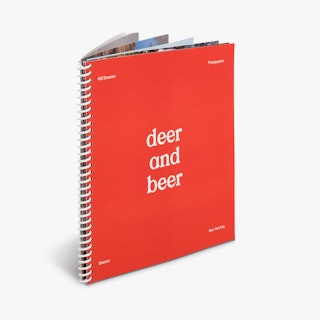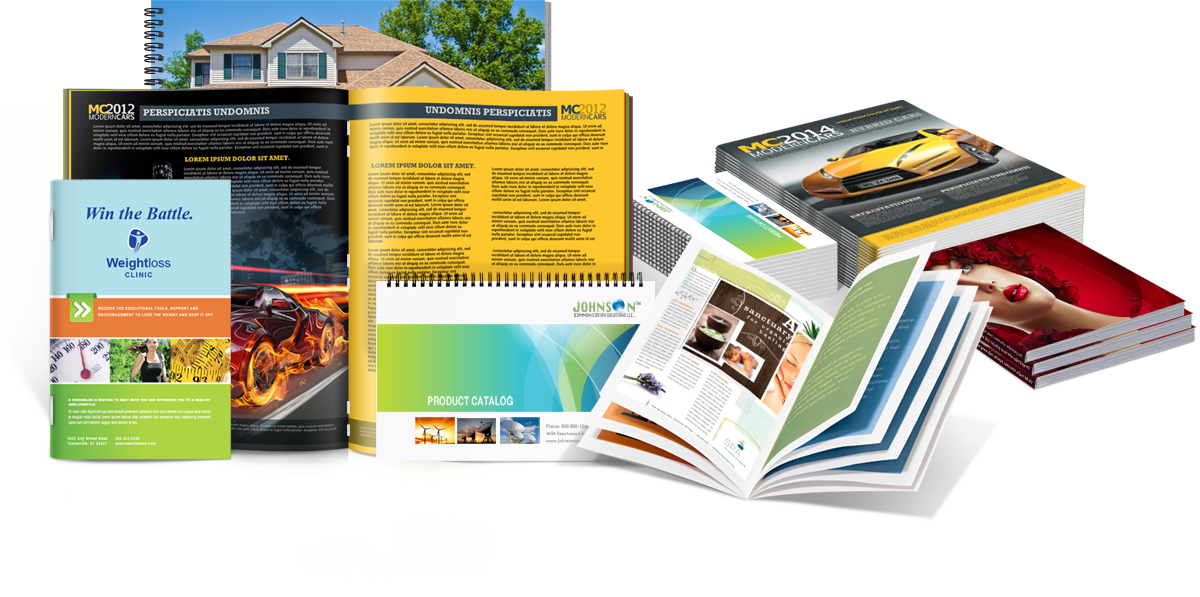Exploring Industry Trends That Are Shaping the Future of Booklet Printing
Wiki Article
The Necessary Guide to Understanding Booklet Printing Options and Techniques
The procedure of brochure printing includes multiple factors to consider that can substantially affect the final item. From choosing the suitable format and dimension to comprehending the subtleties of binding approaches, each option plays an important role. Furthermore, elements such as paper supply and printing methods more influence the efficiency of the brochure. As one navigates these options, it comes to be imperative to realize exactly how they interconnect and what that indicates for the general end result.Comprehending Booklet Dimensions and styles
When considering brochure printing, understanding the numerous layouts and dimensions offered is crucial for accomplishing the desired presentation. Pamphlets can be produced in countless formats, consisting of saddle-stitched, spiral-bound, and perfect-bound, each offering distinct benefits. Usual sizes vary from basic letter (8.5 x 11 inches) to smaller sized alternatives like A5 (5.8 x 8.3 inches), permitting adaptability based on material and target audience.Selecting the ideal dimension can influence both the format and viewers engagement. Bigger dimensions could match aesthetically driven content, while smaller layouts may be extra straightforward and mobile. Additionally, the variety of web pages influences the selection of binding method, as thicker brochures may call for tougher bindings. Ultimately, comprehending these elements permits for an extra tailored method, making sure that the end product straightens with the intended message and visual, enhancing the overall efficiency of the interaction.Picking the Right Paper Stock

Binding Methods: Choices and Considerations
When it involves binding techniques for booklets, numerous choices are available, each with unique benefits. Saddle stitch binding supplies an affordable service for thinner brochures, while ideal binding strategies give an even more refined search for thicker magazines. Wire-O binding stands apart for its durability and ease of use, making it excellent for files that need versatility.Saddle Stitch Binding
Saddle stitch binding provides a cost-effective and practical service for setting up pamphlets, making it a preferred selection among organizations and authors. This binding technique entails folding sheets of paper in half and stapling them along the fold line, developing a orderly and cool look. Typically appropriate for brochures with a lower web page count, saddle sewing is suitable for publications, brochures, and educational products. The simplicity of this strategy enables quick production and is often favored for advertising products or brief runs. Nevertheless, it is necessary to note that saddle stitch binding may not be suitable for thicker pamphlets, as the spine may not stand up under enhanced weight. On the whole, it continues to be a dependable option for numerous printing projects.Perfect Binding Techniques
Perfect binding is an extensively made use of method that offers a refined and expert coating to publications and booklets. This method involves gluing the pages with each other at the back utilizing a strong adhesive, permitting a tidy side and the capacity to hold a bigger variety of pages compared to saddle sewing. Perfect binding is particularly ideal for thicker brochures, such as directories and yearly reports, where a tough, level back is wanted. Furthermore, it provides the choice for a published cover that can be designed to improve visual allure. Nevertheless, considerations such as page matter, paper weight, and the planned use the pamphlet ought to be thought about, as they can influence toughness and general top quality.Wire-O Binding Options
Wire-O binding, known for its longevity and versatility, uses an excellent option for pamphlets that call for easy web page transforming and a specialist look. This binding method utilizes a collection of steel loops that hold pages safely, allowing them to lie level when open. It is particularly appropriate for presentations, brochures, and guidebooks due to its durable nature. Wire-O binding is offered in numerous colors and diameters, fitting various web page counts and thicknesses. Furthermore, it permits the incorporation of covers and tabs, enhancing the brochure's total aesthetic. Considerations for Wire-O binding consist of the option of wire shade, the size of the loopholes, and the degree of personalization desired, every one of which can exceptionally affect the final item's look and capability.Digital vs. Offset Printing: Which Is Best for You?
When picking a printing technique for brochures, recognizing the differences between digital and balance out printing is essential. Digital printing makes use of modern innovation to generate high-quality prints promptly and cost effectively, making it ideal for brief runs or jobs requiring quick turn-around times. It enables personalization, giving the capability to publish on-demand with very little waste.In contrast, offset printing is a typical technique that masters producing huge quantities with constant high quality. It includes moving ink from a plate to a rubber blanket, after that to the paper, which leads to exact details and dynamic shades. Nevertheless, offset printing typically requires longer arrangement times and is much more economical for larger volumes.Ultimately, the option in between electronic and counter printing depends on task requirements, budget, and wanted amount. For little, time-sensitive tasks, electronic could be the finest choice, while balanced out may be better for larger, top quality manufacturings.
Creating Your Brochure: Tips and Finest Practices
When developing a pamphlet, mindful interest to design, font style option, and shade use can considerably improve its performance. A well-structured design guides the viewers's eye, while proper font styles ensure readability and share the wanted tone. Additionally, reliable use shade can evoke emotions and highlight essential information, making the overall design extra impactful.Picking the Right Format
Just how can one successfully pick the best layout for a booklet? It is vital to assess the booklet's purpose and target audience. A clean, organized design improves readability and involvement. Using a grid system can aid in lining up components regularly, producing a specialist look. Furthermore, integrating aesthetic hierarchy with differing dimensions and placements of pictures and message can direct the viewers's eye and highlight crucial information. It is likewise crucial to leave sufficient white space, which prevents overcrowding and permits better emphasis. Evaluating various layouts via mock-ups can supply understanding right into exactly how the design does in real-world scenarios, making sure that the last product fulfills both useful and visual demands. Useful Selecting Proper Font Styles An appropriate typeface can considerably boost the general design of a brochure, complementing the layout and reinforcing the web content's message. The selection of typefaces must take into consideration readability, particularly for body message, as it assures the details is available to all readers. Sans-serif typefaces are frequently favored for digital styles, while serif font styles can offer a traditional feeling in printed materials. It's recommended to limit font selections to 2 or three to maintain visual coherence. Furthermore, typeface dimension plays a crucial function; headings should be distinct however not overwhelming, while body message must be comfy for analysis. When choosing fonts, positioning with the booklet's motif and target market is necessary for efficient interaction and visual allure.Reliable Use of Shade
Color works as an effective tool in pamphlet design, directing and shaping understandings reader emotions. It can stimulate feelings of calmness, depend on, or enjoyment, relying on the hues chosen. Developers should think about color concept concepts, guaranteeing that the selected scheme straightens with the booklet's message and target market. As an example, using warm colors like red and orange can produce necessity, while cooler tones like eco-friendly and blue foster tranquility.Additionally, comparison plays an essential role; complementary shades can redirected here enhance readability and visual charm. Consistency in color usage across pages even more enhances brand name identity and cohesion. Eventually, efficient color implementation not only captures attention but also enhances the pamphlet's purpose, making it an essential aspect of successful design.
Completing Touches: Coatings and Special Results
While many take into consideration the content and format of a pamphlet one of the most important components, the ending up touches, such as layers and special impacts, play an important role in boosting its total charm. Coatings can offer protection and toughness, making sure that the brochure withstands wear and tear. Matte coatings use an advanced, non-reflective surface, while shiny finishings can make colors show up even more lively and appealing. Special results, like embossing or foil marking, include a responsive dimension that can develop an unforgettable impression. These techniques can highlight company website details locations, accentuating crucial information or creating visual interest. Furthermore, UV layer can provide a high-shine coating that boosts the total look.Together, these finishing touches not just boost the pamphlet's visual yet additionally interact professionalism and trust and attention to information, eventually leaving a lasting effect on the reader.Expense Factors To Consider for Booklet Printing
Comprehending the numerous cost factors to consider for pamphlet printing is vital for businesses and organizations intending to maximize their budgets. Secret variables influencing costs include the option of binding, paper, and ink methods. Higher high quality products, such as exceptional paper or specialized inks, commonly increase the overall cost. Furthermore, the dimension and web page matter of the brochure play a substantial duty; bigger booklets require more resources and time to produce.Another crucial factor to consider is the printing technique, whether digital or offset, as each has its own rates structure and suitability for different quantities. Services must also consider design expenses, which can vary based on complexity and the use of specialist solutions. Inevitably, delivery and handling charges can include in the overall, particularly for large orders. By evaluating these elements, organizations can make enlightened choices that straighten with their monetary capacities while achieving the wanted top quality in their published materials.Frequently Asked Questions
What Are the Ecological Impacts of Booklet Printing?
The environmental influences of pamphlet printing include deforestation from paper manufacturing, carbon exhausts from transportation, and waste generation from discarded products - Booklet Printing. Lasting methods, such as using recycled paper and green inks, can minimize these impactsHow Can I Ensure Shade Accuracy in My Pamphlet?
To assure shade precision in a hop over to these guys booklet, one should make use of calibrated displays, employ professional shade profiles, perform test prints, and pick high-grade printing solutions that use color matching and proofing alternatives for finest outcomes.What Is the Normal Turnaround Time for Brochure Printing?
The typical turn-around time for booklet printing differs depending on the intricacy and quantity - Booklet Printing. Normally, it varies from a few days to 2 weeks, affected by elements such as publishing techniques and ending up needsAre There Minimum Order Quantities for Pamphlet Printing?

Can I Print Booklets in Several Languages?
Publishing pamphlets in numerous languages is feasible. Many printing services supply options for multilingual or bilingual designs, permitting effective interaction. Cautious planning assurances that create aspects fit different languages without jeopardizing readability or aesthetics. Additionally, aspects such as paper supply and printing strategies more affect the efficiency of the brochure. When thinking about booklet printing, understanding the various formats and sizes offered is essential for achieving the desired presentation. When picking a printing method for booklets, comprehending the differences between electronic and counter printing is crucial. In addition, the size and page matter of the brochure play a considerable function; larger booklets call for more resources and time to produce.Another vital factor to consider is the printing method, whether digital or countered, as each has its very own prices framework and viability for different amounts. The ecological influences of brochure printing include logging from paper production, carbon exhausts from transportation, and waste generation from discarded materials.Report this wiki page